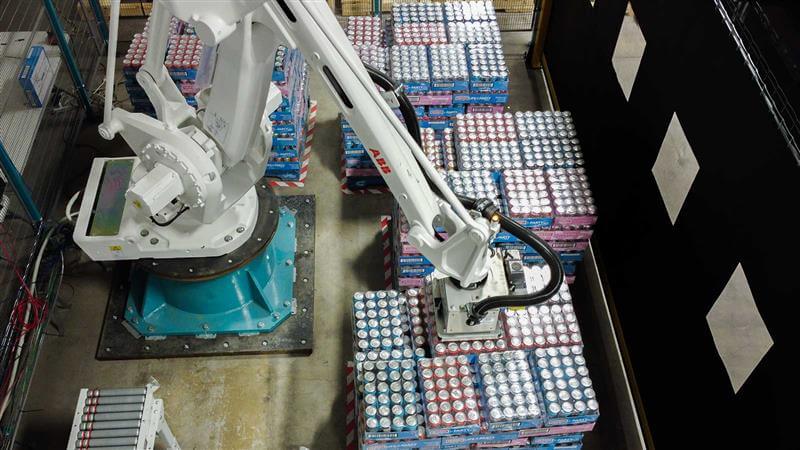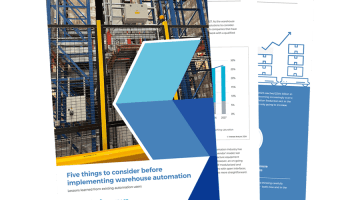How Mixed-Case Palletizing Can Revolutionize Beverage Distribution

In the dynamic landscape of the beverage industry, distributors continually strive to meet the evolving demands of retailers and consumers. One such trend that has risen prominently in recent years is mixed-case palletizing. This approach caters to the increasing demand for product variety and customization.
Understanding Mixed-Case Palletizing
Often referred to as mixed-SKU palletizing or “rainbow pallets,” mixed-case palletizing revolves around building pallets that contain a diverse mix of beverage products. Retailers, aiming to provide a wide variety of choices to their consumers, have been pushing distributors for these customized pallets. The pallets are tailored to contain multiple product types, sizes, and packaging formats, reflecting the market’s shift towards diverse product offerings.
The Conventional Approach
Traditionally, assembling these mixed-case pallets has been a labor-intensive process. It involved manual laborers sorting, picking, and placing each product onto the pallet. Not only was this process time-consuming, but it was also prone to errors, inconsistent pallet builds, and potential product damages. Furthermore, the physical demands of the job often led to increased labor turnover and the associated training costs.
Automated Mixed-Case Palletizers: The Modern Solution
As the beverage industry evolves, so must the solutions that power its distribution. Automation has consistently proven to be a transformative force across various sectors, and in the world of beverage distribution, its impact is undeniable. Integrating advanced technology, sensors, and robotics, automated mixed-case palletizing systems set a new standard for efficiency, accuracy, and reliability. Their introduction has not just improved operations but has redefined what’s possible regarding speed, precision, and scalability.
- Increased Throughput: Automated systems can handle large volumes efficiently, significantly increasing the number of pallets prepared in a given timeframe. This ensures that distributors can cope with high-demand periods, such as seasonal spikes, ensuring consistent delivery schedules.
- Lower Dependence on Labor: Automation reduces the need for manual intervention, thus reducing labor costs and the challenges associated with high turnover rates. This consistency ensures a more predictable operational cost structure and mitigates the risks of labor shortages or training inefficiencies.
- Enhanced Efficiency: Advanced sensors and programming enable these systems to pick, place, and organize products precisely, ensuring that each pallet is optimally built for stability and transportation. This meticulous approach also translates into fewer damages or returns, ensuring that products reach their destination in pristine condition.
- Boosted Profitability: With faster order fulfillment, reduced labor costs, and minimized errors, distributors can expect a tangible increase in their profit margins. Over time, these savings accumulate, offering a competitive advantage in pricing strategies and reinvestment opportunities.
Types of Mixed-Case Palletizing
Automation’s entrance into the mixed-case palletizing world brought with it a host of nuanced approaches, each tailored to the unique needs of beverage distribution centers:
Case Palletizers: Case palletizers build rainbow pallets by picking and place individual cases onto pallets. Equipped with specialized grippers to pick and place cases onto pallets, they are highly flexible and adaptable, making them suitable for handling various product types, sizes, and packaging formats.
Layer Palletizers: Layer palletizers build mixed-SKU pallets by stacking entire layers of products at a time. While traditionally used for cases of uniform products in size and shape, cutting-edge innovations now empower these robots to handle layers filled with mixed-SKUs.
Conclusion
The beverage industry’s shift towards mixed-case palletizing is not just a trend – it’s a reflection of modern market demands. Embracing automation in this domain is not merely about keeping pace with competition; it’s about leading the charge, optimizing operations, and maximizing profitability. If you’re looking to transform your distribution process and capitalize on the benefits of automated mixed-case palletizing, let our team of experts connect with you and determine the best roadmap of success for your operation.
(Images courtesy of NūMove Robotics & Vision)
Categories (tags):


